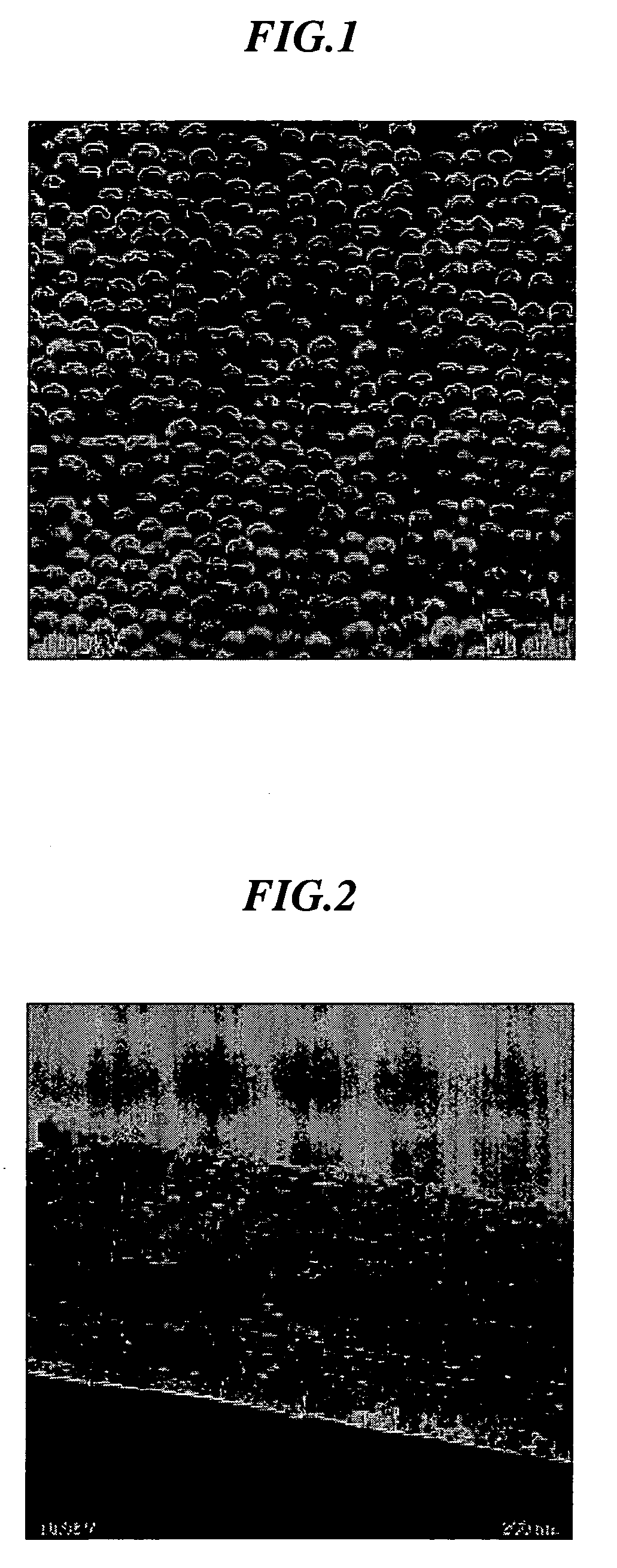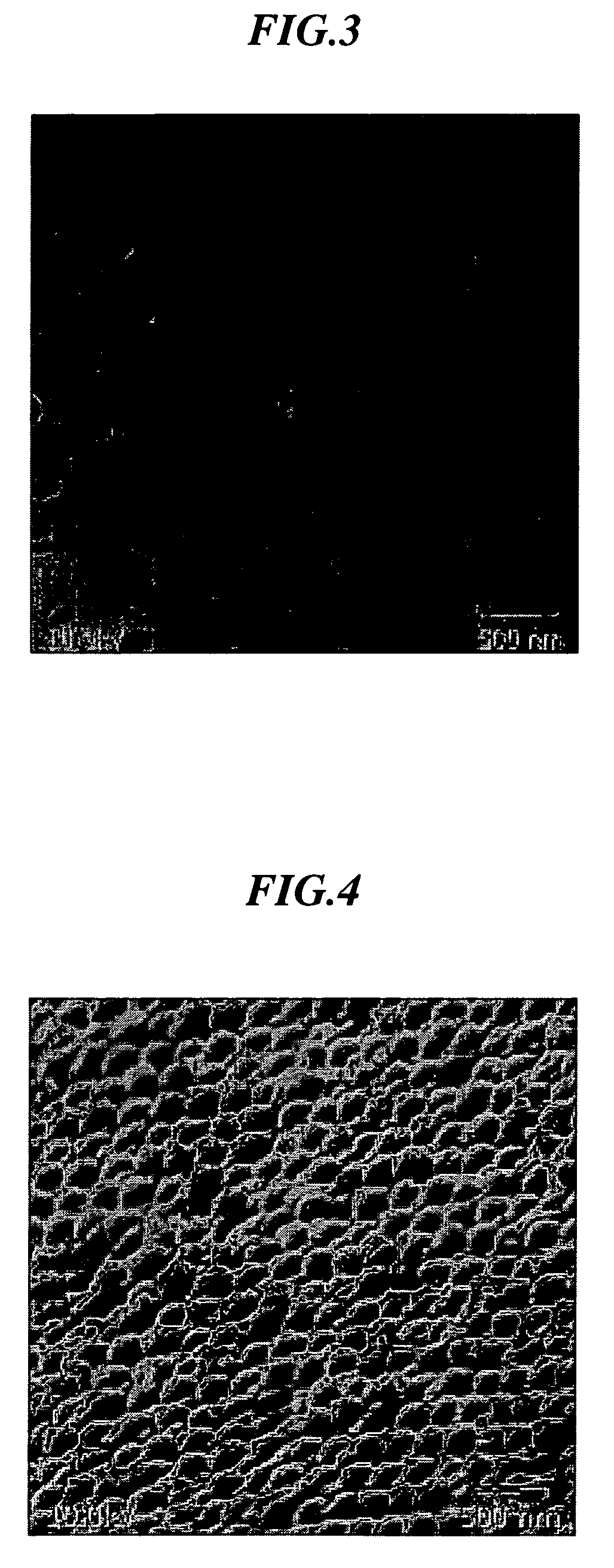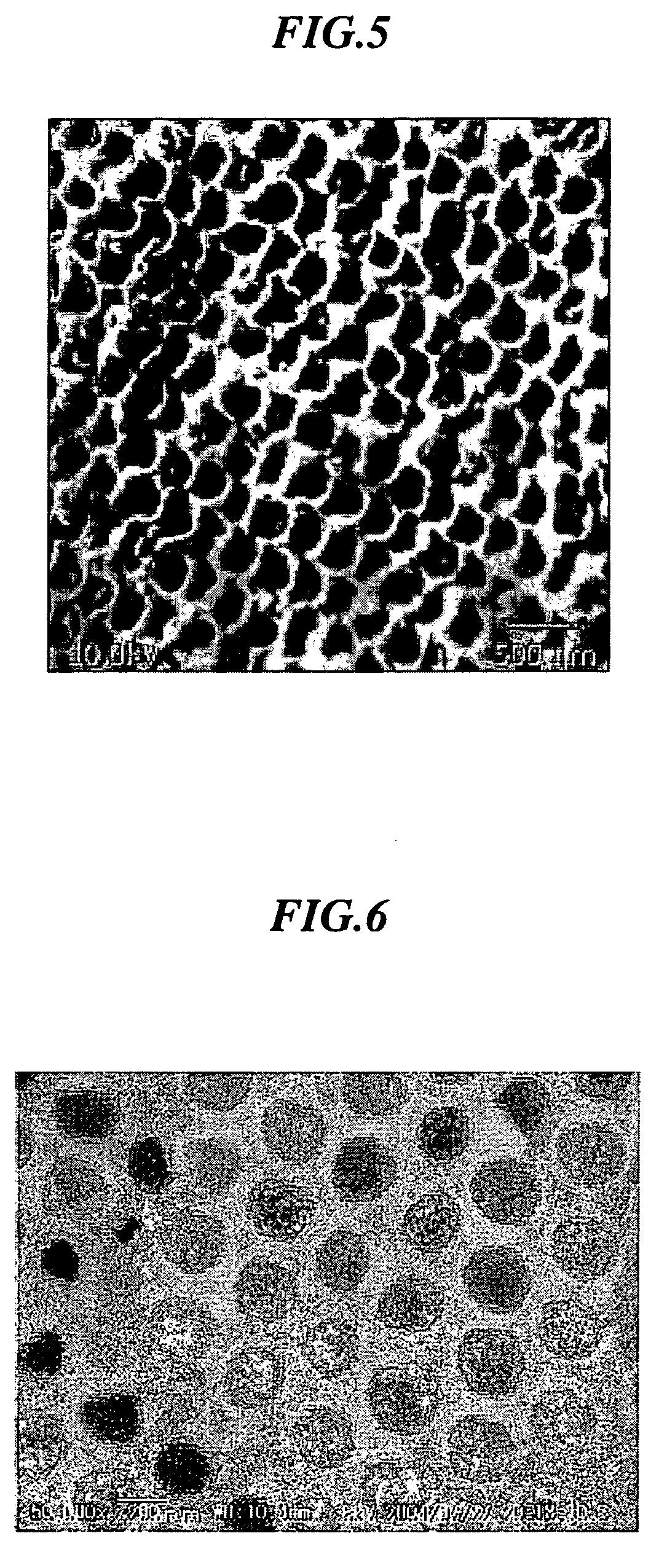Three-dimensional periodic structure, three-dimensional periodic porous structure, and method for producing these
a porous structure and three-dimensional technology, applied in the field of three-dimensional periodic structure, three-dimensional periodic porous structure, and method for producing these, can solve the problems of difficult to achieve the required periodicity of the forming pattern and the alignment of the position of the combining stripes, and the number of very complicated operation steps, etc., to achieve the effect of high chemical resistance, easy design and robust and stable structur
- Summary
- Abstract
- Description
- Claims
- Application Information
AI Technical Summary
Benefits of technology
Problems solved by technology
Method used
Image
Examples
example 1
[0083] In 100 ml of water, 0.5 g of N-isopropylacrylamide and 3.5 g of styrene were added and core particles were prepared under a nitrogen gas flow at 70° C. using potassium persulfate (KPS (K2S2O8)) as an initiator. Furthermore, 0.35 g of N-isopropylacrylamide, 0.03 g of N,N′-methylenebisacrylamide and 0.1 g of acrylic acid were added and a shell portion was formed using KPS as an initiator to prepare core-shell particles comprising a core portion made of polystyrene and a shell portion made of crosslinked poly(N-isopropylacrylamide)-acrylic acid. In the same manner as in Example 3, an average particle size was determined. The resulting particles showed a thickness of the shell portion in a state of being dispersed in water of about 10 m and an average core particle size of 310 nm. 20 mg of a 40 wt % dispersion was applied onto the bottom of a sample bottle, followed by the addition of 0.1 ml of tetraethyl orthosilicate (tetraethoxysilane: TEOS) and further standing for 10 minutes...
example 2
[0084] In 100 ml of water, 0.95 g of N-isopropylacrylamide and 4.2 g of styrene were added and core particles were prepared under a nitrogen gas flow at 70° C. using potassium persulfate (KPS(K2S2O8)) as an initiator. Furthermore, 1.48 g of N-isopropylacrylamide, 0.2 g of N,N′-methylenebisacrylamide and 0.3 g of acrylic acid were added and a shell portion was formed using KPS as an initiator to prepare core-shell particles comprising a core portion made of polystyrene and a shell portion made of crosslinked poly(N-isopropylacrylamide)-acrylic acid. An average particle size of the resulting core-shell particles was measured by a particle analyzer capable of measuring over a wide concentration range, “FPAR-1000” manufactured by Otsuka Electronics Co., Ltd. As a result, it was 490 nm. Variation in particle size was 10%. The particles were observed in a dry state using S-800 type ultra-high resolution scanning electron microscope. As a result, an average particle size was found to be 41...
example 3
[0086] 20 mg of a dispersion (50 wt % water dispersion) of the core-shell particles prepared in the same manner as in Example 2 was applied onto the bottom of a sample bottle having an inner diameter of 25 mm, followed by the addition of 0.1 ml of tetraethyl orthosilicate (tetraethoxysilane: TEOS) and further standing for 30 minutes. After standing for one week while putting on a lid, the lid was taken off, followed by drying for one day to form a thin film of a three-dimensional periodic structure on the bottom of the bottle. The resulting thin film showed an iridescence color.
PUM
| Property | Measurement | Unit |
|---|---|---|
| thickness | aaaaa | aaaaa |
| thickness | aaaaa | aaaaa |
| pore size | aaaaa | aaaaa |
Abstract
Description
Claims
Application Information
 Login to View More
Login to View More - R&D
- Intellectual Property
- Life Sciences
- Materials
- Tech Scout
- Unparalleled Data Quality
- Higher Quality Content
- 60% Fewer Hallucinations
Browse by: Latest US Patents, China's latest patents, Technical Efficacy Thesaurus, Application Domain, Technology Topic, Popular Technical Reports.
© 2025 PatSnap. All rights reserved.Legal|Privacy policy|Modern Slavery Act Transparency Statement|Sitemap|About US| Contact US: help@patsnap.com



